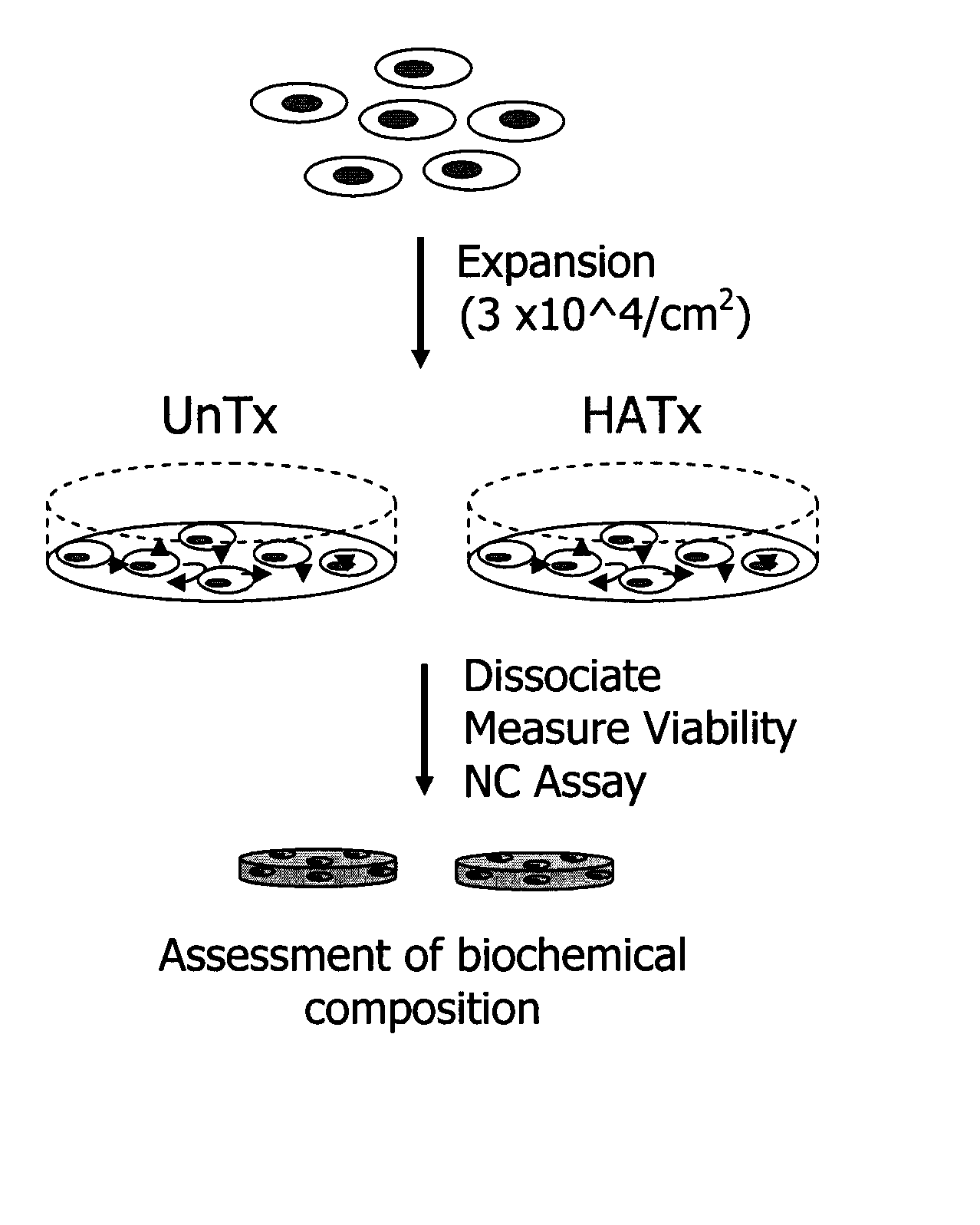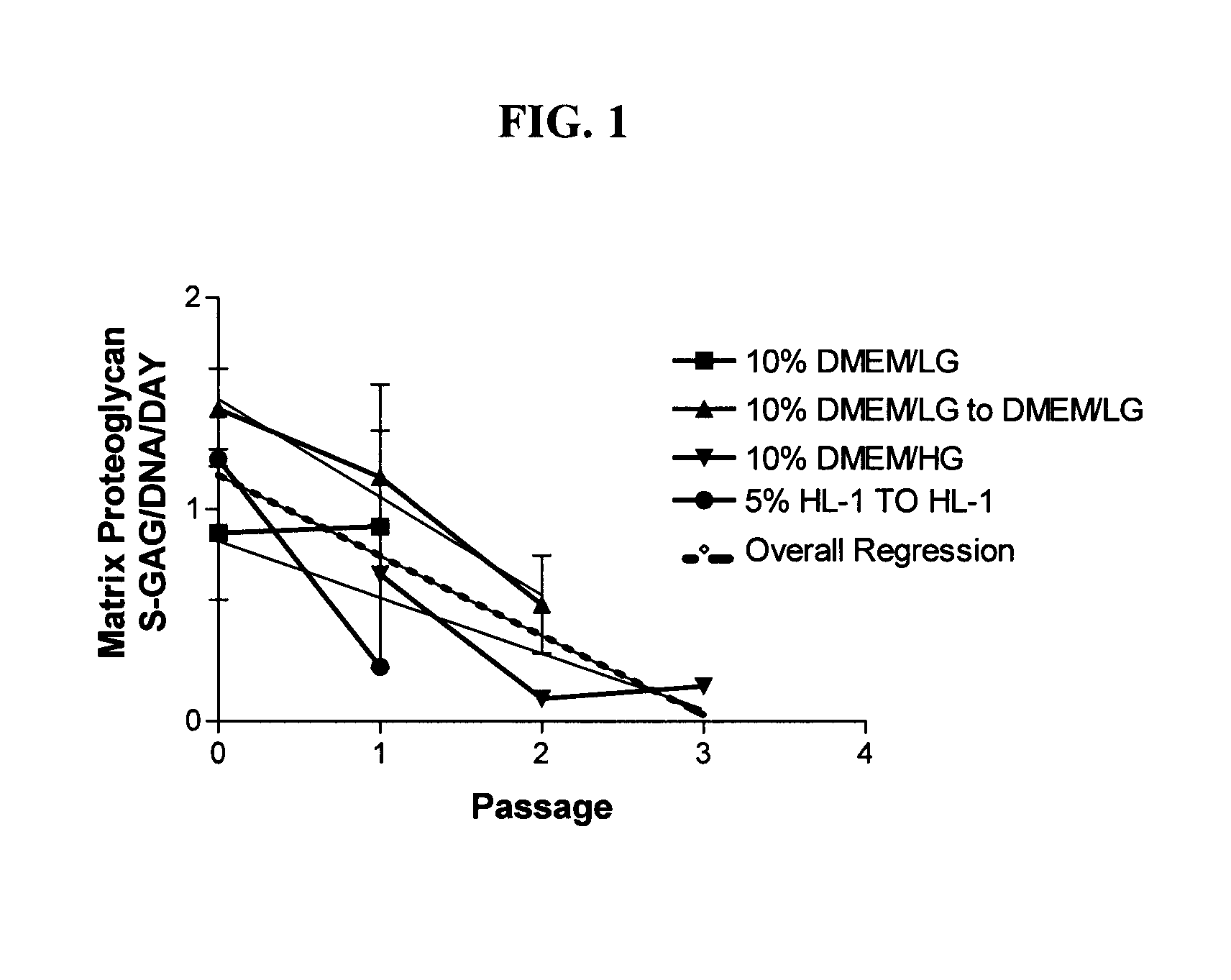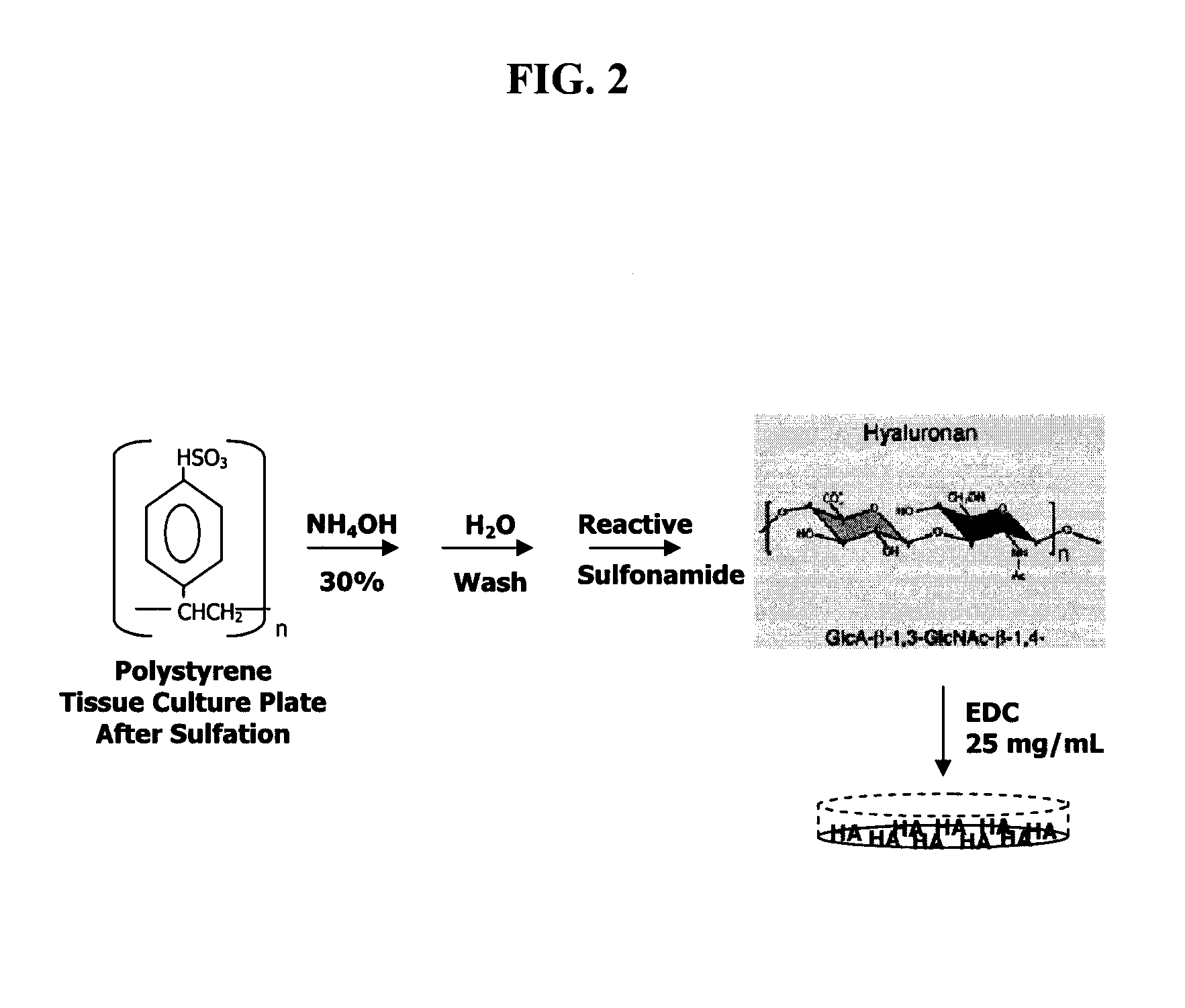Method for Chondrocyte Expansion with Phenotype Retention
a chondrocyte and phenotype technology, applied in the field of chondrocyte expansion with phenotype retention, can solve the problems of cartilage matrix breakdown, degenerative arthritis, loss of quality of life,
- Summary
- Abstract
- Description
- Claims
- Application Information
AI Technical Summary
Benefits of technology
Problems solved by technology
Method used
Image
Examples
example 1
Loss of Chondrocyte Phenotype by Serial Expansion in Serum Containing Media
[0090] Chondrocytes, regardless of tissue origin, rapidly lose the ability to synthesize cartilage specific macromolecules with serial expansion in vitro (Homicz et al., 2002; Mandl et al., 2002). Although juvenile chondrocytes are thought to better retain the ability to synthesize matrix macromolecules than adult articular chondrocytes, the following experiment was performed to determine the effect of serial expansion on chondrocyte matrix synthesis using chondrocytes derived from immature articular cartilage. A variety of media containing serum were evaluated to demonstrate the deleterious effects of serum on chondrocyte differentiation potential.
[0091] Sixteen (16) different donor cell populations were isolated from cadaveric articular cartilage ranging in age from new-born to three years. Four different basal medium formulations containing the indicated amount of fetal bovine serum were used: 10% DMEM / L...
example 2
Method for Covalent Immobilization of Sodium Hyaluronate on Polystyrene Surfaces
[0094] To improve the efficiency with which chondrocytes can be expanded in vitro without loss of native chondrocyte phenotype, juvenile chondrocytes were grown on a modified substrate prepared via covalent attachment of high molecular weight sodium hyaluronate to polystyrene. It was hypothesized that immobilized sodium hyaluronate, in contrast to unmodified tissue culture plastic, would provide a microenvironment that could more closely mimic that of native articular cartilage. The following method for chemical modification of polystyrene with sodium hyaluronate is a modification of that originally described by Turley and Roth (Turley and Roth, 1979).
[0095] In FIG. 2, the virgin polystyrene plates were treated with sulfuric acid at 37° C. for two hours. After removing the sulfuric acid and extensive washing of the plates in deionized distilled water, the reactive sulfonamide was created by adding aque...
example 3
Chondrocyte Phenotype Retained by Serial Expansion on Ha-Coated Plastic in Serum-Free Medium
[0096] Chondrocytes derived from a six week-old subject were taken through two passages using plates that were modified by the method illustrated in Example 2. Differentiation potential of the expanded chondrocytes was assessed after enzymatic dissociation and estimation of total cell number and viability. A proprietary serum-free differentiation medium, developed at Isto Technologies, Inc, was used to stimulate chondrocyte differentiation. In contrast to other methods, such as that described by Martin et al. (U.S. Pat. No. 6,582,960), this medium contains neither TGF β nor dexamethasone to enhance chondrogenic differentiation potential, and the only protein component in this formulation is recombinant human insulin (Serologicals Corporation, Milford, Mass.).
[0097]FIG. 3 shows a schematic representation of the process of cytokine-mediated chondrocyte expansion in which covalent attachment o...
PUM
 Login to View More
Login to View More Abstract
Description
Claims
Application Information
 Login to View More
Login to View More - R&D
- Intellectual Property
- Life Sciences
- Materials
- Tech Scout
- Unparalleled Data Quality
- Higher Quality Content
- 60% Fewer Hallucinations
Browse by: Latest US Patents, China's latest patents, Technical Efficacy Thesaurus, Application Domain, Technology Topic, Popular Technical Reports.
© 2025 PatSnap. All rights reserved.Legal|Privacy policy|Modern Slavery Act Transparency Statement|Sitemap|About US| Contact US: help@patsnap.com



